
==
“Besides, it doesn’t matter if it’s real. It never does with dreams.”
Tim Tharp
==
“The past doesn’t need you anymore. Your future does.”
some Tumblr advice
==
“Science fiction has a long and valuable history of providing us with visions of a better world. …[But] Science fiction since the Sixties has signally failed in that regard; we have been fed, by and large, a diet of Chicken Little soup in a pot of message, ladled out over leg of Frankenstein.”
Storrs Hall
==
After I argued that we need to envision how to build toward utopian ideas rather than attempt to fend off dystopian futures and suggested technological dystopian thinking wasn’t particularly helpful, an acquaintance of mine sent me “The Usborne Book of the Future.” I scribbled some thoughts and then Theo Priestley offered up this piece: Polyfuturism.
So, let’s talk about science fiction and scanning future scenarios.
This is where I believe science fiction can play an invaluable role, but:
- Science is not a theory of reality, but a method of inquiry.
- Science fiction is not a theory of reality, but a method of inquiry.
Science is a process of learning and discovery, and sometimes we learn that what we thought was right is wrong. Science and science fiction and fantasy do not predict the future yet, on occasion, they can offer plausible narratives for what could be as well as offer some reflection on what is. On my side in this discussion, Michio Kaku encourages all of us to think about science fiction and fantasy and future possibilities through the eyes of physics. He often says the laws of physics, as far as we can tell, do not rule things out, just makes suggestions on what could be possible. But possible does not always mean feasible. And maybe that’s the interesting thing about quantum physics. It suggests possible paths of existence all circling back onto itself never really going backwards in time and yet affecting the time continuum. It suggests the universe is made-up of multiple stories. In fact, in relativity, now only exists in a frame of reference not as an absolute. Yeah. Time and space may appear as an unchanging multi-dimensional block within which we call the present, it is interesting to maybe think about time and space as contextual, never stagnant, and constantly changing second by second. All that said. The future should always be viewed as a world of possibilities where the good things we desire can be imagined. Far too often science fiction, and futurism, dwells on
(a) the negative possible outcomes, or
(b) an extension of the present amplified.
Weird, huh? If you believe science fiction is a way to imagine how the world will be different and to help make sense of the future, well, why wouldn’t we seek to envision the hopeful possibilities?
Which leads me to how “extension of the present” amplifies less-than-useful possibilities.
 I would argue seeing, let alone understanding, the significance of most events in the present is dubious at best because there are too many spiraling indirect consequences within the myriad of conflicting competing interests. This includes both threats and opportunities. That said. Being passive is not an option while being active guarantees nothing. So what I suggest is that rather than seek to extend the present you should seek out the ‘power’ you have, i.e., the power applicable in a wide range of contexts, and seek to maintain this power/control at the lowest cost possible. I would even argue that protecting the power you have is almost survival 101 (albeit it’s not directly translatable to thrivable 101). The tricky part of that is if you tether things too tightly to the present (which is simply a different way of embracing the past), you are doomed. Doomed because connectedness will prevail over any one thing you have deemed ‘important.’ What I mean by that is any one thing, in today’s world, is never discrete, it is always connected in wildly complex intricate ways with other things. What I mean is the bad things are so embedded within the weave of things you can’t simply shed them by extending the present. Heck. I could even quote Goldratt’s ‘the race’ and point out that simply eliminating one thing creates another equal, if not worse, issue. The truthy is extending the present simply means you get the bad with the good and the bad, more often than not, is gravity. Gravity that drags the future down every time the future seeks to fly. Look. There exists in all of us a tendency to think of the present as the appearance of how things will be in the future. We pride ourselves on our decisions in the present. We believe we’ve considered all the available options and think that the current decisions we’ve made seem rational, right, and proper — but that’s a trap. We all find it difficult to think of reasons why we might change the ways in which we do things today, how our habits will develop or how our attitudes and preferences might evolve, but change inevitably happens, and it’s undoubtedly coming. Or, as Toffler said, ’the future always comes too fast and in the wrong order.”
I would argue seeing, let alone understanding, the significance of most events in the present is dubious at best because there are too many spiraling indirect consequences within the myriad of conflicting competing interests. This includes both threats and opportunities. That said. Being passive is not an option while being active guarantees nothing. So what I suggest is that rather than seek to extend the present you should seek out the ‘power’ you have, i.e., the power applicable in a wide range of contexts, and seek to maintain this power/control at the lowest cost possible. I would even argue that protecting the power you have is almost survival 101 (albeit it’s not directly translatable to thrivable 101). The tricky part of that is if you tether things too tightly to the present (which is simply a different way of embracing the past), you are doomed. Doomed because connectedness will prevail over any one thing you have deemed ‘important.’ What I mean by that is any one thing, in today’s world, is never discrete, it is always connected in wildly complex intricate ways with other things. What I mean is the bad things are so embedded within the weave of things you can’t simply shed them by extending the present. Heck. I could even quote Goldratt’s ‘the race’ and point out that simply eliminating one thing creates another equal, if not worse, issue. The truthy is extending the present simply means you get the bad with the good and the bad, more often than not, is gravity. Gravity that drags the future down every time the future seeks to fly. Look. There exists in all of us a tendency to think of the present as the appearance of how things will be in the future. We pride ourselves on our decisions in the present. We believe we’ve considered all the available options and think that the current decisions we’ve made seem rational, right, and proper — but that’s a trap. We all find it difficult to think of reasons why we might change the ways in which we do things today, how our habits will develop or how our attitudes and preferences might evolve, but change inevitably happens, and it’s undoubtedly coming. Or, as Toffler said, ’the future always comes too fast and in the wrong order.”
“If we are called on to not fear the future, it might be better to persuade us that we have a place in it, that it is ours to make. Show us a future we want to believe in.”
Michael Harris

Businesswoman changing reality of drought to spring season
Look. Any future thinking typically demands a reference point as kind of an anchor for thinking. What this means is we need to rummage around history to be able to look ahead more effectively. In doing so it helps us understand the trajectory and choices made in the past which got us where we are. In other words, how did we create the present we are in? There is no way to escape the present if you don’t know how you got trapped in it. As a corollary, it also helps to rummage around science fiction and fantasy for future anchor possibilities. What I am discussing is foresight versus forecasting. Foresight has a long view and is speculative; forecasting uses data to extrapolate what may likely come next. One is possibilities the other is probabilities. Pick your poison carefully, but, simplistically, you cannot go wrong if you seek to improve the quality of the present so that it can exist in the future; not predict the future because it is always out of reach. Why? Prediction is as much a way of thinking and how we craft facts to build from moreso than any high falutin technique. And that matters because it all shapes our perceptions of what is ‘inevitable,’ and, as a consequence, what kinds of futures are considered ‘plausible’. That said. Whether you’re looking at the past, present, or future, you’re always seeking the dimensions of change the space and time within which things occur. In 2020 Gaya Herrington said amidst global slowdown and risks of depressed future growth potential from climate change, social unrest, and geopolitical instability, to name a few, responsible leaders faced the possibility that growth will be limited in the future. And only a fool keeps chasing an impossibility. I would argue that you aren’t chasing impossibilities, you are changing possibilities over a range of probabilities some of which were increasingly unlikely and others increasingly likely.
“Technological optimism means to practice the ability to recognize bad surprises early enough to do something about them.’
Edward Tenner
 Which leads me to technology can be both gravity and wings for the future.
Which leads me to technology can be both gravity and wings for the future.
The present is burdened by existing myths, narratives, and institutional system structures. People (culture & society) are caught in the wretched hollow in between the reality that science and technology do not provide a philosophy, or human framework, by which to live or the belief structure of society. Sure. It is impossible to not embrace all that science and technology has to offer and, yet, they are bereft of any moral construct within which to build a better future. In that, culture, and society, get squeezed in this conflict.
“The very basic core of a human’s living spirit is its passion for adventure. The joy of life comes from our encounters with new experiences and hence there is no greater joy than to have an endlessly changing horizon, for each day to have a new and different sun.”
Christopher McCandless
Circling back to the topic at hand, the future of technology and science, the foundation of all science fiction and futuristic fantasy, is profoundly dependent upon humans and their understanding of the future. This understanding needs to be grounded in shared values, shared what is valued,’ shared sense of how to create value, and shared sensemaking of what is valued (note: Zak Stein discusses “what we value” really well). This will span political, economic, societal, community and legal structures. And while the future certainly will be reliant upon technology in some form or fashion, it would be a mistake to shape future thinking solely based on simplistic techno-optimistic people captivated by fantastical thinking because, inevitably, most of this thinking doesn’t think about the fabric of society within which those things will be woven. We need futures crafted through science and technology ‘by and for humans’ with an eye toward humanity’s progress and prosperity. And maybe that is where I end this section. Because both science fiction and fantasy may not design a future state, they certainly have optimistic scenarios to lead us to inquire “how we can we craft a future like that.” And isn’t that half the battle?
“They used to say if man could fly, he’d have wings. But he did fly. He discovered he had to. Do you wish that the first Apollo mission hadn’t reached the moon, or that we hadn’t gone on to Mars and then to the nearest star? That’s like saying you wish that you still operated with scalpels and sewed your patients up with catgut like your great-great-great-great-grandfather used to. I’m in command. I could order this. But I’m not because Doctor McCoy is right in pointing out the enormous danger potential in any contact with life and intelligence as fantastically advanced as this. But I must point out that the possibilities, the potential for knowledge and advancement is equally great. Risk. Risk is our business. That’s what the starship is all about. That’s why we’re aboard her.”
Captain James T. Kirk from the episode Return to Tomorrow
Which leads me to no specific future is a given (or inevitable).
 First. So how do we get, pragmatically, to the future? Oddly I will not highlight innovations or ‘original thinking,’ but rather, uhm, half invented ideas. Half-invented ideas is a Nassim Taleb thought. The reality is science fiction is simply a narrative of half invented ideas. They are mostly ideas which can be partially attained; therefore, the future is more about taking the time to explore how to attain the half-invented idea. It is through that process in which objectives are attained. I argue for half-invented ideas because progress is always making (and even moreso today) knowledge, energy and resources more and more inexpensive, accessible and abundant. I would even argue that a half-invented idea addresses civilization’s most challenging obstacle – short term thinking. A half-invented idea gives you a running start toward the future. It is much easier to stay ‘on mission’ if you are editing rather than creating from scratch. Ponder.
First. So how do we get, pragmatically, to the future? Oddly I will not highlight innovations or ‘original thinking,’ but rather, uhm, half invented ideas. Half-invented ideas is a Nassim Taleb thought. The reality is science fiction is simply a narrative of half invented ideas. They are mostly ideas which can be partially attained; therefore, the future is more about taking the time to explore how to attain the half-invented idea. It is through that process in which objectives are attained. I argue for half-invented ideas because progress is always making (and even moreso today) knowledge, energy and resources more and more inexpensive, accessible and abundant. I would even argue that a half-invented idea addresses civilization’s most challenging obstacle – short term thinking. A half-invented idea gives you a running start toward the future. It is much easier to stay ‘on mission’ if you are editing rather than creating from scratch. Ponder.
Second. So how do we envision a future? Science fiction is, well, science fiction. It’s a narrative that expands the imagination of what could be.
“It is now in our capacity to destroy civilization as we know it, or to build a world of unprecedented opportunity for all people.”
Barbara Marx Hubbard
Science fiction stories also play an important role in challenging the basic truth that most people tend to extrapolate from the status quo to envision some predetermined future, i.e., a bounded vision. It is bounded by the constraints and suppositions of dominant perceptions of reality of which science fiction pushes against. The truth is there is no single “future” let alone one single trajectory, but rather an array of possibilities and paths. This happens because the future is continuously shaped by our actions as well as our inactions. That’s why I think the sharpest people speak of ‘futures’ and not just ‘the future.’ There is a spectrum of future possibilities — the probable, possible, plausible, the desirable. Science fiction and fantasy expand our understanding of the possibility spaces of tomorrow’s choices and, therefore, choices of what future we shape. But. Nothing is inevitable; even narratives. Once again, science fiction offers possibilities. This is an important thought because the best futurist thinking embraces the unresolved and the things that have yet to be well defined. They offer vague shapes of what could be and propositions seeking clarity, i.e., structures yet to be designed. Circling back to the beginning, as I read Theo Priestly’s piece about futurists and Futurism, I was reminded that he was reprising a concern that Alvin Toffler, probably the original contemporary futurist, had. Toffler lamented that his idea of futurists was being diverted by a focus on the present in likely futures. He was concerned that the objectives were limiting the possibilities of Futurism. Ultimately, he believed that futurism shouldn’t focus too much on identifying likely futures, but rather should be exploring ‘the less likely but the impactful’ possible futures. In my words looking to the future should be about designing a future scenario within which people can see themselves within and therefore start redesigning their own lives to be able to not only fit into it but to build it person by person. That is easier said than done because the thing about the future is past narratives trap our future thoughts. We seem to forget is that some of the biggest transformations occur when problems and crises arise because they tend to create a perfect space in which to explore valuable  futures. And with that let me quote Heather Vessent: “who gets to decide what is positive and what is dystopia?” The future always resides in “human needs solutions” not technological capabilities. Simplistically, this means we ground things in human needs – significance, connection, love, progress, contribution, meaning, and not from ‘optimal functionalities’ of a technological widget (which means we can do things only in the way that the widget suggests). This means that the technocrats view of considering solutions from a technological capability perspective with human needs as secondary is fraught with peril. The peril resides in that all of these solutions best fit the present rather than redesigning or potentially redesigning a future. And while the technocrats may claim that technology is the engine for progress what I actually described is almost like putting a governor on progress. We may see some short-term productivity increases, but long term all it does is continue to bound existing behavior and attitudes rather than looking towards the horizon for new attitudes and behaviors.
futures. And with that let me quote Heather Vessent: “who gets to decide what is positive and what is dystopia?” The future always resides in “human needs solutions” not technological capabilities. Simplistically, this means we ground things in human needs – significance, connection, love, progress, contribution, meaning, and not from ‘optimal functionalities’ of a technological widget (which means we can do things only in the way that the widget suggests). This means that the technocrats view of considering solutions from a technological capability perspective with human needs as secondary is fraught with peril. The peril resides in that all of these solutions best fit the present rather than redesigning or potentially redesigning a future. And while the technocrats may claim that technology is the engine for progress what I actually described is almost like putting a governor on progress. We may see some short-term productivity increases, but long term all it does is continue to bound existing behavior and attitudes rather than looking towards the horizon for new attitudes and behaviors.
Which leads me to “eyes up” thinking and doing.
We all know that walking looking down at your feet means it is only a matter of time before you run into something. The trick is always seeing ahead while not losing sight of where your feet actually get placed.
“Ideas, unless outward circumstances conspire with them, have in general no very rapid or immediate efficacy in human affairs; and the most favourable outwards circumstances may pass by, or remain inoperative, for want of ideas suitable to the conjuncture. But when the right circumstances and the right ideas meet, the effect is seldom slow in manifesting itself.”
John Stuart Mill
Oh. That said. “Seeing” or “scanning” is a daily task – and a daily task better done by a team than any one individual. “Seeing” seeks out reference points and signals of change in the present offering cues to ideas for the future. Yeah. And this is where rather than discussing innovation I bring up ‘half-invented ideas’ again. These signals should be bucketed into ‘opportunistic positive’ signals and ‘dangerous dystopian’ signals. In other words, investigate and interrogate the things that seem to put boundaries on future progress or even future death – for the greater world AND the half-invented ideas themselves. But what this means is we need to consider what the futures could be and more importantly what the world could be like in which a half-invented idea would prosper or wither away. Thinking of it all this way is important because we cannot imagine the future trajectories of every organization, of every idea, of every community, of every economy, of every country, let alone of every person, or even of any half-invented idea, but we can certainly craft a world all of those things could exist within. In other words, create a fictional future within which all of those things can thrive and prosper and you’ve identified something to be able to fully-invent half-invented ideas toward.
Which leads me to identifying stories.
Stories always play a role in the looking toward the future. Science fiction stories thrive in this scenario, but not all stories are created equal and there are science fiction stories of the past, stories of the present, and stories of the future. Stories of the future are speculative fiction, but valuable nonetheless. But all of the stories are important because they activate our brain, and then we share the story, it actually synchronizes an aspect of a collective sensemaking brain. can become even more powerful when shared. For when we come together to listen to a story our brains start to synchronize with those of the person telling us the story. From there we are off to the deeper motives, desires, imagination, perspectives races. And that mental race is the fundamental underpinning of building a better future.

“If you want truly to understand something, try to change it.”
Kurt Lewin
People must be able to envision a better future in order to make the choices to craft it. That takes some work as well as some imagination. And here is where I end, with a thought from Theodore Roosevelt: “reformers will be assailed on the one side by the reactionary, and on the other by that type of bubble reformer who is only anxious to go to extremes, and who always gets angry when he is asked what practical results he can show. The true reformer must study hard and work patiently.” Toffler took that thought a step farther in Future Shock suggesting we needed to train people to think as futurists – all people. Society needs imagination doors to walk through and science fiction and fantasy tend to be the builders of those doors – for all people. Ponder.
“For nothing will remain unchanged. The future is fluid, not frozen. It is constructed by our shifting and changing daily decisions, and each event influences all others. In education, we need to begin paying attention to matters routinely ignored.”
Alvin Toffler











 Which leads me to unlearning.
Which leads me to unlearning. But accumulators can be blowhards.
But accumulators can be blowhards.

 A 56 percent majority of Trump voters say that if a national media outlet reported that Trump said something untrue, they would be more inclined to believe him than the news outlet.
A 56 percent majority of Trump voters say that if a national media outlet reported that Trump said something untrue, they would be more inclined to believe him than the news outlet.

 The Trump ‘empire’ spans the globe. He is a ‘globalist.’ That said. Trump’s view of globalization is not a normal transnational business person’s thinking about globalization. He thinks about it, as he does about everything, in a very transactional way. The global economy may be interconnected in a variety of ways between countries, but he never looks at it as a complex weave like a web of possibilities but instead as a simplistic series of small linear transactions which get a assessed in a win/lose way. It’s simplistic, it’s flawed, and dangerous – at least if you were worried about the future prosperity of the United States.
The Trump ‘empire’ spans the globe. He is a ‘globalist.’ That said. Trump’s view of globalization is not a normal transnational business person’s thinking about globalization. He thinks about it, as he does about everything, in a very transactional way. The global economy may be interconnected in a variety of ways between countries, but he never looks at it as a complex weave like a web of possibilities but instead as a simplistic series of small linear transactions which get a assessed in a win/lose way. It’s simplistic, it’s flawed, and dangerous – at least if you were worried about the future prosperity of the United States.
 To be clear. None of what I’ve shared isn’t to suggest the existing system is perfect, but destruction of the system, and USA central role, is clearly not to the benefit of America’s future.
To be clear. None of what I’ve shared isn’t to suggest the existing system is perfect, but destruction of the system, and USA central role, is clearly not to the benefit of America’s future.
 From a meta perspective, one could argue that our ideal is incompatible with industrial progress and industrialization. From a mesa perspective, it could simply be the constant friction between the ideal and reality. So, let’s stick with the latter for a moment. There is a reality of progress and that is, well, its relentless energy constantly grinds against the present reality. That constant grinding is a reflection of the tension of people relentlessly holding on to ‘some vision of the ideal’ despite all the signs and warnings reality continuously gives us. This oddly seems to feed a sense of powerlessness. As reality becomes more and more obvious the freefall from the heights of the ideal to the material reality is horrifying. And yet day in and day out we look around at a rude, restless, world and continuously try and replace it with polite order and machines hoping to force reality to reflect more our ideal. Unfortunately, our world is an intricate semi-organized urban/rural/industrial/agricultural society of which the machinery of its collective existence encourages us to have an image of humankind in the grip of uncontrollable forces. Once again, we are faced with another conflict of reality. Industrialization, once associated with movement and noise, has entered another phase of industrialization, technology, but one in which eliminates all evidence of any of the frenzied chaotic movement and clamor that we have always associated with industrialization. Once again the silence is horrifying and yet wherever there is noise we begin believing there must be a problem – quite the paradox. Maybe worse is that this silent machine simultaneously works against our dreams and simultaneously enables our dreams which creates even more tension/conflict. I’d suggest this is a battle between reality and imagination, progress and the ideal. And throughout, humans being generally an optimistic bunch, we hold on to the simple-minded notion that everything can be right again and can be made right again. We work harder and harder to fix things that we just can’t put a finger on. As we work, we grab onto a temporary feeling of relief that maybe we were on the path to some solution and the hope of a lasting possibility. The ideal can never be let go no matter how harsh reality suggests we should let go. It is almost like The Great Gatsby when Nick says “Gatsby did not know that it was already behind him, somewhere back in that vast obscurity beyond the city, where the dark fields of the Republic rolled on under the night.” And maybe that is where living in the now runs into the most issues. The imagined versus reality. Or continuous efforts to banish facts in order to maintain faith in the ideal. It is the relentless tug of the possibility which simply makes optimizing the present so difficult.
From a meta perspective, one could argue that our ideal is incompatible with industrial progress and industrialization. From a mesa perspective, it could simply be the constant friction between the ideal and reality. So, let’s stick with the latter for a moment. There is a reality of progress and that is, well, its relentless energy constantly grinds against the present reality. That constant grinding is a reflection of the tension of people relentlessly holding on to ‘some vision of the ideal’ despite all the signs and warnings reality continuously gives us. This oddly seems to feed a sense of powerlessness. As reality becomes more and more obvious the freefall from the heights of the ideal to the material reality is horrifying. And yet day in and day out we look around at a rude, restless, world and continuously try and replace it with polite order and machines hoping to force reality to reflect more our ideal. Unfortunately, our world is an intricate semi-organized urban/rural/industrial/agricultural society of which the machinery of its collective existence encourages us to have an image of humankind in the grip of uncontrollable forces. Once again, we are faced with another conflict of reality. Industrialization, once associated with movement and noise, has entered another phase of industrialization, technology, but one in which eliminates all evidence of any of the frenzied chaotic movement and clamor that we have always associated with industrialization. Once again the silence is horrifying and yet wherever there is noise we begin believing there must be a problem – quite the paradox. Maybe worse is that this silent machine simultaneously works against our dreams and simultaneously enables our dreams which creates even more tension/conflict. I’d suggest this is a battle between reality and imagination, progress and the ideal. And throughout, humans being generally an optimistic bunch, we hold on to the simple-minded notion that everything can be right again and can be made right again. We work harder and harder to fix things that we just can’t put a finger on. As we work, we grab onto a temporary feeling of relief that maybe we were on the path to some solution and the hope of a lasting possibility. The ideal can never be let go no matter how harsh reality suggests we should let go. It is almost like The Great Gatsby when Nick says “Gatsby did not know that it was already behind him, somewhere back in that vast obscurity beyond the city, where the dark fields of the Republic rolled on under the night.” And maybe that is where living in the now runs into the most issues. The imagined versus reality. Or continuous efforts to banish facts in order to maintain faith in the ideal. It is the relentless tug of the possibility which simply makes optimizing the present so difficult. Because these things dominate the definition of our space, we will typically gravitate towards who we know and what we know and, well, staying in place. To be clear, part and pieces of that are good, but we need to acknowledge the need for some boundaries in social cohesion. That being said even the boundaries which we erect for the safety of who and what we are should be permeable boundaries. What I mean by that is the boundaries have an infinite amount of doors in and out. And this is where the present comes crashing into the conversation. For if you have ideals and yet you are trying to maximize the present who owns the right of the space or the time or even the present, who even owns the doors? For it is within the space where the ideal becomes inherently social and not individualistic. And this is where “better for having you there” resides, for ‘you’ is not an individual but rather a collective. It is this space in which maximizing the present and reaching for the ideal is always about all about keeping a balance between what is built and what is grown, the architect and the gardener. Negotiation, compromise, genuine empathy, in an embrace of other people and their ideas all of which creates a daily testing of boundaries among people. Sure, there will always be tension between private benefit and common good, but social cohesion exists because of a meaningful and moral intent for progress and it is actually progress, not inertia, which promotes a sustainable social identity. Some of this may sound silly in the crazy hectic nonstop 24/7 world that we live in. But I would be remiss if I didn’t point out that loneliness is not just the absence of meaning, but just as much can be found in the absence of company. What I mean by this is that you can feel alone on an empty street just as you can feel alone on a crowded street with busy people going here and there. Yeah. With no social connection we find ourselves in a bubble of isolation even when surrounded by people. To be clear, connection is simply the first step toward community and collective good, but without it there is no community or collective good. Anway. It is at this point it’s quite possible that someone seeks meaning by trying to maximize the present – as an individual. That is simply a fool’s errand and it does not really offer a true path to “making that place better for you having been there.” Once again, without connection one can never truly maximize a situation nor do they improve their chances of moving any closer to the ideal nor do they really have an opportunity to make where they are better for being there.
Because these things dominate the definition of our space, we will typically gravitate towards who we know and what we know and, well, staying in place. To be clear, part and pieces of that are good, but we need to acknowledge the need for some boundaries in social cohesion. That being said even the boundaries which we erect for the safety of who and what we are should be permeable boundaries. What I mean by that is the boundaries have an infinite amount of doors in and out. And this is where the present comes crashing into the conversation. For if you have ideals and yet you are trying to maximize the present who owns the right of the space or the time or even the present, who even owns the doors? For it is within the space where the ideal becomes inherently social and not individualistic. And this is where “better for having you there” resides, for ‘you’ is not an individual but rather a collective. It is this space in which maximizing the present and reaching for the ideal is always about all about keeping a balance between what is built and what is grown, the architect and the gardener. Negotiation, compromise, genuine empathy, in an embrace of other people and their ideas all of which creates a daily testing of boundaries among people. Sure, there will always be tension between private benefit and common good, but social cohesion exists because of a meaningful and moral intent for progress and it is actually progress, not inertia, which promotes a sustainable social identity. Some of this may sound silly in the crazy hectic nonstop 24/7 world that we live in. But I would be remiss if I didn’t point out that loneliness is not just the absence of meaning, but just as much can be found in the absence of company. What I mean by this is that you can feel alone on an empty street just as you can feel alone on a crowded street with busy people going here and there. Yeah. With no social connection we find ourselves in a bubble of isolation even when surrounded by people. To be clear, connection is simply the first step toward community and collective good, but without it there is no community or collective good. Anway. It is at this point it’s quite possible that someone seeks meaning by trying to maximize the present – as an individual. That is simply a fool’s errand and it does not really offer a true path to “making that place better for you having been there.” Once again, without connection one can never truly maximize a situation nor do they improve their chances of moving any closer to the ideal nor do they really have an opportunity to make where they are better for being there.

 Anyone who reads pieces I write know I am generally optimistic about technology and its future. So let me begin by recommending a
Anyone who reads pieces I write know I am generally optimistic about technology and its future. So let me begin by recommending a 
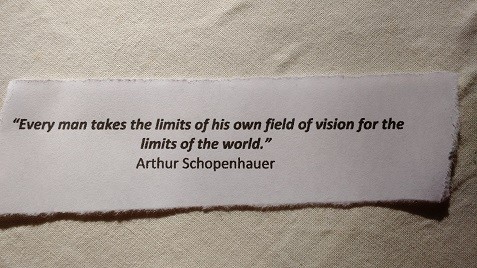
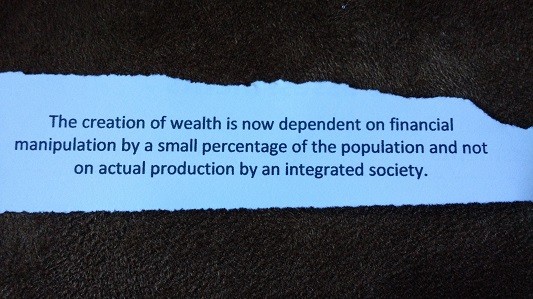
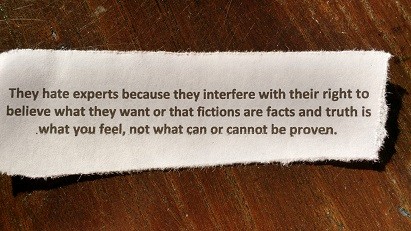
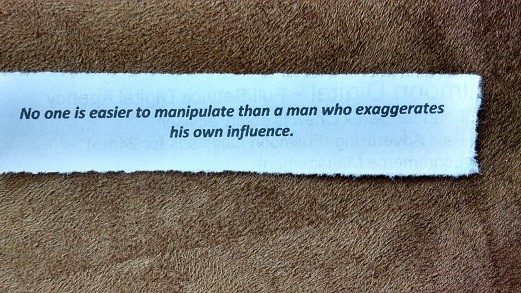


 Everything we perceive as reality is, in fact, constructed from fragments and fragmentation which, even when rationally constructed, can make life pretty confusing for the everyday person. Basically, this is a survival technique in that we grab onto some fragments to make sense of things the best we can. What becomes an existential survival crisis is WHAT fragments we grab onto. As Tony Fish suggests our root problem is that everything when framed with a maths or data mind is a decision. When framed by a psychologist or social scientist, everything becomes a choice. To someone who has authority and responsibility, or plays with complexity, everything is a judgment. Confusingly everything is an opinion to a judge. Math and data offer tantalizing fragments to judge and rationalize reality – sometimes well and sometimes not as well. That may all seem very confusing, but dependence upon different framing and beliefs, i.e., rationalizing fragments, creates some ‘life efficiency’ for each of us while simultaneously creating a brittle coherence to the community. In addition, this also tends to be reductionary. What I mean by that is inevitably this encourages us to act situationally rather than act based on scenarios. Once again, this is a reductionary life where we react as a matter of rule, work through heuristics (our rationalizing fragments) and then simply repeat the majority of our behavior, i.e., the shadows of previous decisions shine a spotlight on decision-making in the present.
Everything we perceive as reality is, in fact, constructed from fragments and fragmentation which, even when rationally constructed, can make life pretty confusing for the everyday person. Basically, this is a survival technique in that we grab onto some fragments to make sense of things the best we can. What becomes an existential survival crisis is WHAT fragments we grab onto. As Tony Fish suggests our root problem is that everything when framed with a maths or data mind is a decision. When framed by a psychologist or social scientist, everything becomes a choice. To someone who has authority and responsibility, or plays with complexity, everything is a judgment. Confusingly everything is an opinion to a judge. Math and data offer tantalizing fragments to judge and rationalize reality – sometimes well and sometimes not as well. That may all seem very confusing, but dependence upon different framing and beliefs, i.e., rationalizing fragments, creates some ‘life efficiency’ for each of us while simultaneously creating a brittle coherence to the community. In addition, this also tends to be reductionary. What I mean by that is inevitably this encourages us to act situationally rather than act based on scenarios. Once again, this is a reductionary life where we react as a matter of rule, work through heuristics (our rationalizing fragments) and then simply repeat the majority of our behavior, i.e., the shadows of previous decisions shine a spotlight on decision-making in the present.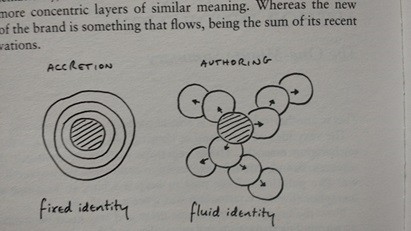
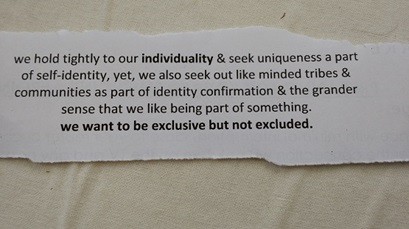
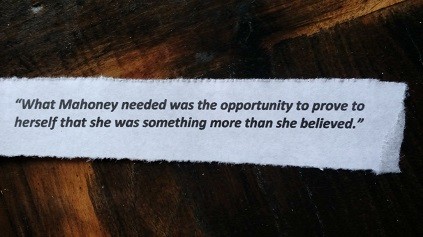
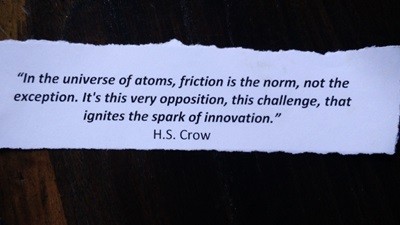
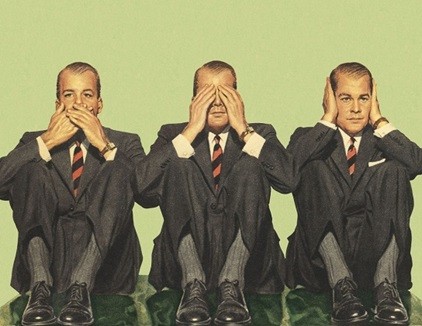
 Which leads me to the superficial surface of human instincts.
Which leads me to the superficial surface of human instincts.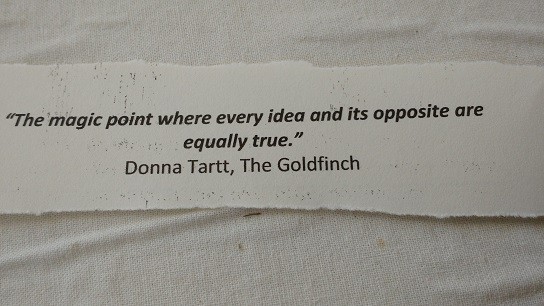

 Ah. Technocrats. This is a companion piece to “circulation of elites” just that this time I am focusing on technology and monopolistic technology autocrats who think of themselves as the elites to guide us all to a better future. Now. The bible of how technocrats have hijacked capitalism is Technopoly by Neil Postman, but the concept of technocracy can be traced to William Henry Smyth, a California engineer, who introduced the term “technocracy” in his 1919 article titled “Technocracy – Ways and Means to Gain Industrial Democracy,” which was published in the Journal of Industrial Management (Corporate Finance Industry). Anyway. Technocrats not only have an odd view of capitalism, but of society in general. Generally speaking, they have an inordinate dislike of constraints which only encourages technological advancement without any constraints, or any real moral boundaries, as they believe the market will naturally sort itself out. That is a dangerously naive thought. As Leo Marx said:
Ah. Technocrats. This is a companion piece to “circulation of elites” just that this time I am focusing on technology and monopolistic technology autocrats who think of themselves as the elites to guide us all to a better future. Now. The bible of how technocrats have hijacked capitalism is Technopoly by Neil Postman, but the concept of technocracy can be traced to William Henry Smyth, a California engineer, who introduced the term “technocracy” in his 1919 article titled “Technocracy – Ways and Means to Gain Industrial Democracy,” which was published in the Journal of Industrial Management (Corporate Finance Industry). Anyway. Technocrats not only have an odd view of capitalism, but of society in general. Generally speaking, they have an inordinate dislike of constraints which only encourages technological advancement without any constraints, or any real moral boundaries, as they believe the market will naturally sort itself out. That is a dangerously naive thought. As Leo Marx said: They are reengineering society, but just to be clear, they do so in the pursuit of scale and profit over safety concerns and public accountability. But maybe what should concern us most is HOW they seek to reengineer. Its not just that their objectives are a bit naïvely dangerous, but they also are crafting a structure of numbers and measurements (its kind of an extension of a belief that machines are the future so the way the future should be shaped is in machine terms). They are shaking the entire etch-a-sketch of society and they don’t care if any of the sand is lost while shaking. They have a structured ideology of mathematical measurement to justify anything and everything. It’s a warped vision of even the warped Taylorism that got us to where we are today. It is almost like we are being led by an illiterate group of people in that their only literacy is in numbers, scale and machine technology wrapped in a loose, but extreme, libertarian etch-a-sketch. They weave webs of ‘progress’ under the guise of numbers – usage, engagement, and views – while ignoring whether those individual usages, engagements & views, are actually good for human beings. “It will all sort out” and
They are reengineering society, but just to be clear, they do so in the pursuit of scale and profit over safety concerns and public accountability. But maybe what should concern us most is HOW they seek to reengineer. Its not just that their objectives are a bit naïvely dangerous, but they also are crafting a structure of numbers and measurements (its kind of an extension of a belief that machines are the future so the way the future should be shaped is in machine terms). They are shaking the entire etch-a-sketch of society and they don’t care if any of the sand is lost while shaking. They have a structured ideology of mathematical measurement to justify anything and everything. It’s a warped vision of even the warped Taylorism that got us to where we are today. It is almost like we are being led by an illiterate group of people in that their only literacy is in numbers, scale and machine technology wrapped in a loose, but extreme, libertarian etch-a-sketch. They weave webs of ‘progress’ under the guise of numbers – usage, engagement, and views – while ignoring whether those individual usages, engagements & views, are actually good for human beings. “It will all sort out” and  “scale flattens negative affects” represents the technocrat mantra. They ignore the relationships between morality (what is good) and the power of the tools they are crafting. Once again, if you squint hard enough what they say seems reasonable, but stop squinting and it all becomes a blur of dangerously unconstrained technological innovations and systems. They will claim they are not doing this, but they are sacrificing progress for humanity and society for a hollowed out, but profitable, progress in business (because they see their ‘business’ as not really a business but a societal infrastructure development – for which they get paid for). I say all that so we can stop being surprised by the horrible existing leadership. They have no vision for what they are creating. They are just creating things assuming a vision will emerge from their technological wizardry. The past is all unworthy of consideration (even the important things of the past), they believe the future will be shaped not through some grand strategy but rather by chasing things – at exponential scale/pace – that seem beneficial, and numbers become proof of performance (note: numbers are not people). All of this is done rather than creating and sustaining a substantive healthy society.
“scale flattens negative affects” represents the technocrat mantra. They ignore the relationships between morality (what is good) and the power of the tools they are crafting. Once again, if you squint hard enough what they say seems reasonable, but stop squinting and it all becomes a blur of dangerously unconstrained technological innovations and systems. They will claim they are not doing this, but they are sacrificing progress for humanity and society for a hollowed out, but profitable, progress in business (because they see their ‘business’ as not really a business but a societal infrastructure development – for which they get paid for). I say all that so we can stop being surprised by the horrible existing leadership. They have no vision for what they are creating. They are just creating things assuming a vision will emerge from their technological wizardry. The past is all unworthy of consideration (even the important things of the past), they believe the future will be shaped not through some grand strategy but rather by chasing things – at exponential scale/pace – that seem beneficial, and numbers become proof of performance (note: numbers are not people). All of this is done rather than creating and sustaining a substantive healthy society. optimizing the body’s potential and any number of human enhancing features, but they do so with the objective to increase productivity and wealth. Technology is certainly only increasing its role in the weave of lives, personal and professional, and the general infrastructure of how life is lived. There is no lack of technology ‘plenty.’ But one should reflect upon the harsh truth that nothing cuts deeper to a society, or any business in fact, then the unhealthy relationship between ‘want’ amid ‘plenty.’ Technocrats cannot envision anyone ‘wanting’ in the future when the reality is, unless constrained in some key ways, while technology will be plenty, plenty of people will end up ‘wanting’ for something other than technology. I will say that the one thing the technocrats are clearly right on is ‘technological driven future is inevitable.’ Technology will only become more and more ubiquitous in our lives; often in some fairly invasive ways. Some of the issues this creates cannot be ignored and, I would argue, should be resolved before we go off to the technological races (this is an
optimizing the body’s potential and any number of human enhancing features, but they do so with the objective to increase productivity and wealth. Technology is certainly only increasing its role in the weave of lives, personal and professional, and the general infrastructure of how life is lived. There is no lack of technology ‘plenty.’ But one should reflect upon the harsh truth that nothing cuts deeper to a society, or any business in fact, then the unhealthy relationship between ‘want’ amid ‘plenty.’ Technocrats cannot envision anyone ‘wanting’ in the future when the reality is, unless constrained in some key ways, while technology will be plenty, plenty of people will end up ‘wanting’ for something other than technology. I will say that the one thing the technocrats are clearly right on is ‘technological driven future is inevitable.’ Technology will only become more and more ubiquitous in our lives; often in some fairly invasive ways. Some of the issues this creates cannot be ignored and, I would argue, should be resolved before we go off to the technological races (this is an 


